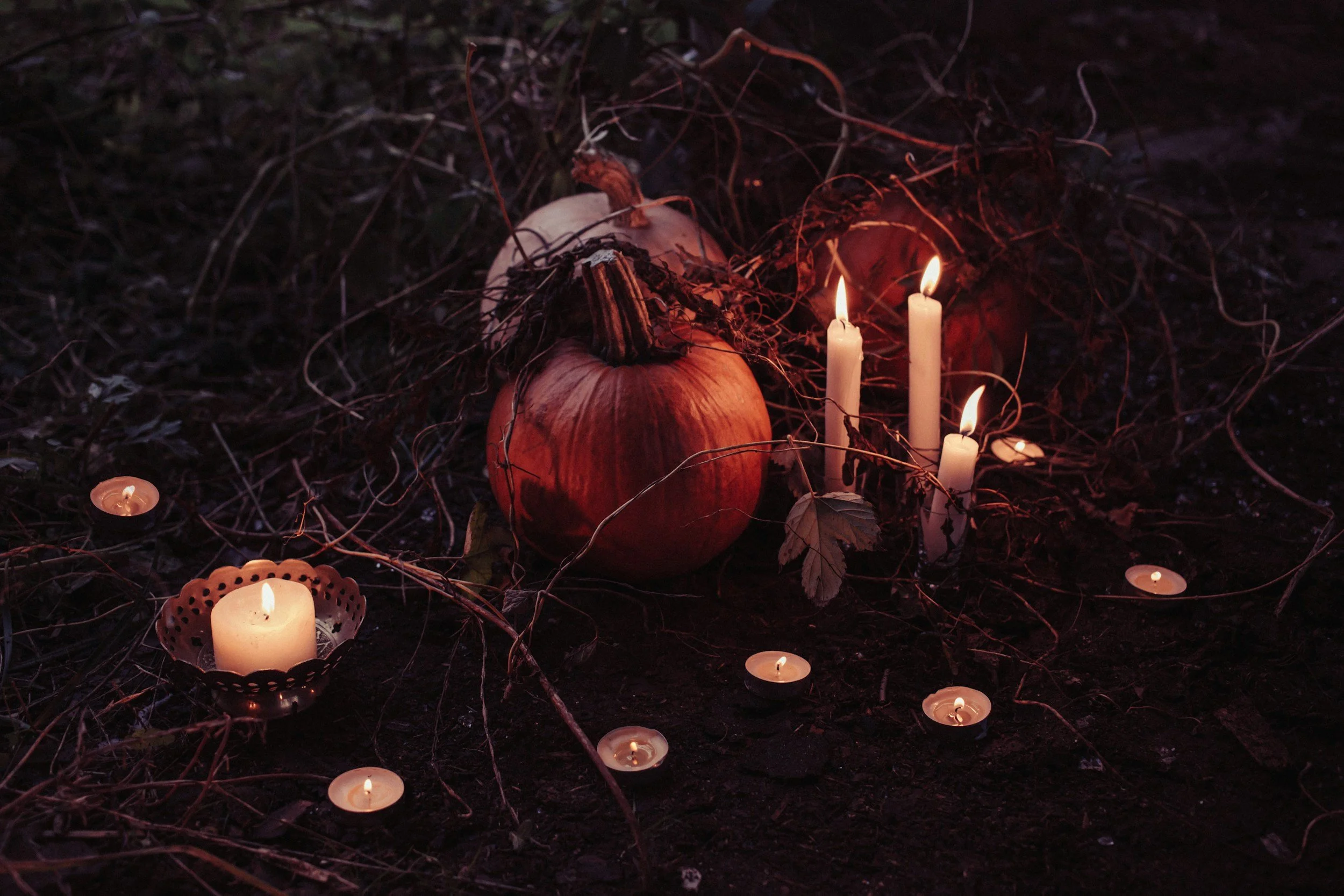The veil is thin: Grief and ancestor work in October
October is a month many people associate with falling leaves, colder nights, and costumed fun, but for those who are grieving, it can be a time of quiet reckoning. In many traditions, this is when “the veil is thin” — a time when the boundary between the living and the dead feels more permeable, more tender.
For some, this belief is rooted in cultural and spiritual traditions like Samhain (pronounced “sow-in”), a Gaelic festival marking the end of the harvest and the beginning of winter. Or Día de los Muertos, the vibrant Mexican holiday that honors deceased loved ones. For others, it may feel like an intuitive truth: in October, something in the air invites reflection, remembrance, and connection with those we’ve lost.
As a grief therapist, I sometimes hear clients speak of feeling closer to their beloved dead this time of year. Dreams may shift, memories come easier, or signs from the departed feel more vivid. Rather than dismiss these experiences, I see them as meaningful expressions of love and longing — an opportunity for intentional connection, reflection, and healing.
Why October Matters in Grief Work
In many grief traditions — therapeutic and spiritual — ritual and remembrance can be deeply grounding. October invites us to slow down and turn inward. The shorter days and longer nights make space for mourning, storytelling, and honoring those who came before us.
Many cultures around the world have practices for ancestor veneration. These are not about worshiping the dead, but about remembering, acknowledging lineage, and keeping the memory of loved ones alive. For those of us who didn’t grow up with these rituals — or come from cultures that have lost touch with them — it can be meaningful to explore our own ancestral threads rather than borrowing from others.
Honoring Without Appropriating
It’s important to approach these practices with cultural appreciation, not appropriation. That means we don’t co-opt rituals like Día de los Muertos without understanding their origins or sacred meanings. Instead of mimicking traditions that aren’t ours, we can turn toward our own lineages, however complex they may be.
Ask yourself:
What did your grandparents or great-grandparents believe about the afterlife?
Were there seasonal customs around remembrance, storytelling, or lighting candles?
Are there family heirlooms, recipes, songs, or sayings that connect you to your people?
Even if your lineage has been fractured by colonization, assimilation, or loss, your grief and curiosity can be a starting point — not for perfection, but for presence.
Ideas for Honoring the Dead (That Don’t Involve Cultural Appropriation)
Here are some grief-centered, grounded, and spiritually mindful ways to connect with your beloved dead this October:
1. Create an Ancestor Altar
Gather photos, objects, or symbols that remind you of your people — biological, chosen, or spiritual. Light a candle. Say their names aloud. Leave offerings like flowers, food, or notes. Let it be a sacred and simple space. Make it yours.
2. Cook a Loved One’s Favorite Meal
Food is a powerful connector. Make a dish your person loved and eat it mindfully. Share it with others if you feel moved. Say their name at the table. Tell a story about them.
3. Take a Grief Walk
Go outside and walk with the intention of remembering. Let fallen leaves, bare branches, or cool air evoke your grief. Speak to your loved one out loud or silently. You don’t need answers — just presence.
4. Journal or Write a Letter to Your Dead
Tell them what’s been happening. What you miss. What you wish you could say. This can be a deeply moving form of emotional release and connection.
5. Light a Candle for the Departed
Each night, light a candle for someone you miss. Let the flame be a witness to your grief and a symbol of ongoing connection. You might pick a significant time to do this: sunset, 9:59 pm, etc. When the candle is lit, you can choose to fire gaze, to speak to your loved ones, or to do an activity that they once did (a cross-word for a wordy Grandma, for instance).
6. Share Stories with People Who Knew Them
Oral tradition matters. Reminiscing can help integrate grief, strengthen relationships, and reduce feelings of isolation. We can take turns with loved ones sharing story of people who impacted our lives.
7. Attend or Host a Remembrance Ritual
If you belong to a cultural or spiritual community that marks this season, lean into it. If not, create a ritual of your own — with music, poetry, silence, or prayer — that feels meaningful and authentic. You can also consider attending open events that come from other cultures.
Grief Is a Portal, Not a Problem
When we grieve, we’re not just missing someone… we’re metabolizing love. October’s thinning veil invites us to be present with that process. You don’t need to believe in spirits or ancestors to engage in remembrance; what matters is your intention. Grief asks us not to “get over” but to live with loss, to build a relationship with absence that honors the presence of what was.
Let this writing give you formal permission: you’re allowed to cry, to laugh at old memories, to rage at injustice or death’s unfair timing, to whisper into the dark, and to feel not-so-alone in doing so.
The veil is thin. You’re not imagining it. Let your grief speak. Let your dead be remembered. Let your heart stay open.


